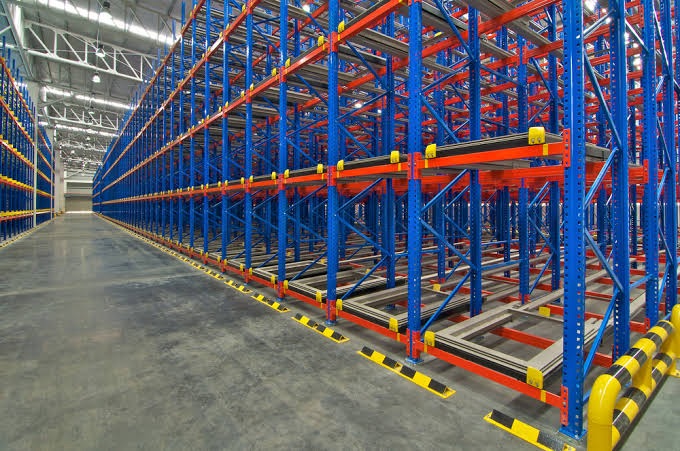In warehouse and industrial environments, storage racks are integral to efficient operations. They support significant loads, store valuable inventory, and facilitate the smooth flow of goods. However, when these racks are not properly maintained, they can become a serious safety hazard. Regular storage racking inspections are crucial to ensure that these structures remain safe, functional, and compliant with safety regulations. This article explores the importance of these inspections and provides a comprehensive checklist to guide the process.
Why Are Storage Racking Inspections Important?
1. Safety of Personnel: The primary reason for regular inspections is to protect the safety of warehouse personnel. A compromised racking system can collapse, causing serious injuries or even fatalities. Ensuring that racks are in good condition minimizes the risk of accidents.
2. Prevention of Inventory Loss: Damaged or overloaded racks can lead to inventory falling or being crushed, resulting in significant financial losses. Regular inspections help identify and address issues before they lead to costly damage.
3. Compliance with Regulations: Various safety regulations and standards, such as those from OSHA or local safety authorities, require regular inspections of storage racks. Non-compliance can result in fines, legal liabilities, and damage to the company’s reputation.
4. Prolonging Rack Lifespan: Inspections help in identifying wear and tear, allowing for timely repairs and maintenance. This proactive approach extends the lifespan of the racking system, ensuring a better return on investment.
5. Efficiency and Productivity: A well-maintained racking system supports efficient warehouse operations. Regular inspections ensure that racks are properly aligned, secure, and accessible, enabling smooth material handling and reducing downtime.
Storage Racking Inspection Checklist
A thorough inspection process should cover various aspects of the racking system. Below is a comprehensive checklist to guide the inspection:
1. General Condition of Racks
• Inspect for visible damage, such as dents, bends, or rust on beams and uprights.
• Check for signs of wear and tear, including fatigue in metal components.
• Ensure that all racks are level and properly anchored to the floor.
2. Load Capacity
• Verify that each rack is not overloaded and that load capacities are clearly marked.
• Ensure that the weight distribution is even across the beams and shelves.
3. Beam Inspection
• Examine beams for deflection, cracks, or any signs of distress.
• Check for missing or damaged beam connectors and locking pins.
4. Upright Frame Inspection
• Look for any deformation, such as bowing or twisting of the upright frames.
• Inspect the baseplates for proper anchoring and any signs of damage.
5. Bracing and Welds
• Check diagonal and horizontal bracing for integrity and alignment.
• Inspect welds for cracks or other signs of failure, particularly at joints and connections.
6. Rack Protection
• Verify that rack guards, such as column protectors and end-of-aisle protectors, are in place and in good condition.
• Ensure that all safety barriers and bollards around racks are properly positioned and functional.
7. Pallet Condition and Positioning
• Inspect pallets for damage and ensure they are compatible with the racking system.
• Confirm that pallets are correctly positioned on the racks to avoid overhanging or improper load distribution.
8. Bolts and Fasteners
• Check that all bolts, nuts, and fasteners are tight and secure.
• Inspect for missing or loose hardware that could compromise the rack’s stability.
9. Rack Labeling
• Ensure that all racks have clear and visible labeling indicating load capacity and other relevant information.
• Verify that labels are up to date and compliant with safety regulations.
10. Environmental Factors
• Assess the environment for factors that could affect rack integrity, such as temperature fluctuations, moisture, or corrosive chemicals.
• Ensure that racks are protected from environmental damage where necessary.
11. Employee Awareness and Training
• Confirm that warehouse staff are trained on the safe loading and unloading of racks.
• Ensure that staff know how to report any observed rack damage or issues.
Frequency of Inspections
The frequency of racking inspections can vary depending on the specific needs of the facility. However, a general guideline includes:
• Daily or Weekly Visual Checks: Quick visual inspections by staff to spot obvious issues.
• Monthly Inspections: More detailed inspections by designated personnel, checking for common issues like damage, misalignment, and load capacities.
• Annual Professional Inspections: A thorough inspection by a qualified engineer or safety inspector, including load tests and structural assessments.
Taking Action After Inspections
After completing an inspection, it’s crucial to document all findings and take immediate action on any identified issues. Repairs should be made promptly, and in cases where damage is severe, the affected rack should be taken out of service until repairs are completed. Keeping a detailed log of inspections and repairs is also essential for tracking the history and maintaining compliance.
Conclusion
Regular storage racking inspections are not just a regulatory requirement but a critical component of maintaining a safe and efficient warehouse environment. By adhering to a rigorous inspection schedule and following a comprehensive checklist, businesses can protect their employees, preserve inventory, and extend the life of their racking systems. In turn, this leads to a safer, more productive, and cost-effective operation.

